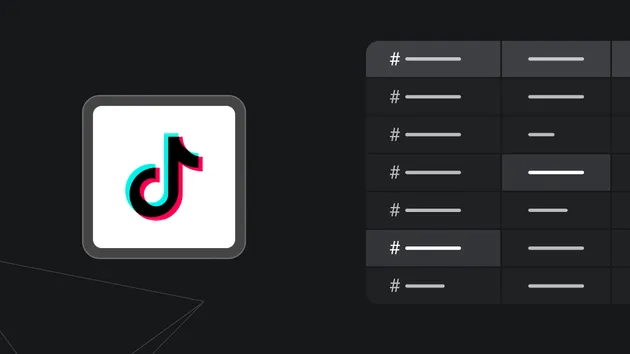Stress & Load Testing Tool
Pricing
$10.00/month + usage
Stress & Load Testing Tool
Test your website's performance under load with this comprehensive stress testing tool and see the results in a table, json or export to excel or google sheets via csv. Simulate multiple concurrent users, measure response times, and identify bottlenecks before they impact your real customers.
Pricing
$10.00/month + usage
Rating
5.0
(3)
Developer

One Scales
Actor stats
3
Bookmarked
9
Total users
2
Monthly active users
10 days ago
Last modified
Categories
Share
Test your website's performance under load with this comprehensive stress testing tool and see the results in a table, json or export to excel or google sheets via csv. Simulate multiple concurrent users, measure response times, and identify bottlenecks before they impact your real customers.
Recently Added: Summary Graphs for response time, errors and status codes in png image.
Description
This actor helps you stress test websites and APIs by simulating concurrent user traffic. Get detailed performance metrics including response times, success rates, throughput, and error analysis. Perfect for:
- Load testing - Verify your site can handle expected traffic
- Performance benchmarking - Measure response times under various load conditions
- Capacity planning - Determine your infrastructure limits
- API testing - Test RESTful endpoints with different HTTP methods
- Pre-launch validation - Ensure your site is production-ready
Key Features
- Test multiple URLs simultaneously with different HTTP methods (GET, POST, PUT, PATCH, DELETE)
- Configure concurrent virtual users to simulate real traffic patterns
- Duration-based testing (run for X seconds)
- Gradual ramp-up periods to simulate realistic traffic growth
- Proxy support to distribute load and avoid IP blocking
- Custom User-Agent for request customization
- Comprehensive metrics: response times (min/max/avg/median/P95/P99), throughput, success rates
- Detailed error analysis and status code breakdown
- Per-request and aggregated summary data
- Visual performance reports with charts (Response Time, Requests/Errors, Status Codes)
Tips for Effective Stress Testing
Start Small and Scale Up
Begin with low concurrent users (5-10) and gradually increase to identify your breaking point. Use the ramp-up time feature to simulate realistic traffic growth.
Use Realistic Test Scenarios
- Test the actual user journeys on your site (login, browse, checkout, etc.)
- Include appropriate User-Agent for your use case
Interpret Your Results
- Response time P95/P99 - Focus on these percentiles rather than averages, as they show what your slowest users experience
- Success rate - Aim for 99%+ success rate; anything lower indicates problems
- Throughput - Requests per second your system can handle
- Error patterns - Check error details to identify specific bottlenecks (database, API, memory, etc.)
- Visual reports - Review the generated PNG charts for visual insights into performance trends
Input
Configure your stress test using the following parameters:
UI Configuration
Basic Settings
Start URLs (required)
- List of URLs to test
- Supports multiple endpoints simultaneously
- Each URL can use different HTTP methods (GET, POST, PUT, PATCH, DELETE)
- Example:
https://api.example.com/users
Concurrent Users
- Number of virtual users simulating traffic simultaneously
- Free plan: 1-10 users
- Paid plans: 1-100 users
- Default: 10
- Tip: Start with 5-10 and increase gradually
Test Duration in Seconds (required)
- Run test for a specific time period
- Free plan: 1-1200 seconds (30 minutes)
- Paid plans: 1-1200 seconds (30 minutes)
- Default: 20
Ramp-Up Time
- Gradually increase load over X seconds
- Set to 0 for immediate full load
- Range: 0-720 seconds
- Default: 0
- Tip: Use 30-60 seconds for more realistic scenarios
Proxy Settings
Proxy Configuration
- Enable Apify proxy to distribute requests across multiple IPs
- Recommended for tests with >20 concurrent users
- Helps avoid rate limiting and IP blocking
Advanced Settings
User-Agent
- Custom User-Agent string
- Leave empty to use default Chrome user agent
- Default:
Mozilla/5.0 (Windows NT 10.0; Win64; x64) AppleWebKit/537.36 (KHTML, like Gecko) Chrome/120.0.0.0 Safari/537.36
Request Timeout
- Maximum time to wait for response
- Range: 1000-30000ms (1-30 seconds)
- Default: 30000ms
Follow Redirects
- Automatically follow HTTP redirects (301, 302, etc.)
- Default: enabled
JSON API Configuration
Output
The actor generates comprehensive performance data with two types of records: SUMMARY records (aggregated metrics per URL) and REQUEST records (individual request details).
UI Output
Results are displayed in a table view with the following information:
SUMMARY Records (One per URL tested)
Test Information
- Type - Always "SUMMARY" for aggregated records
- Page (URL) - The endpoint that was tested
- Method - HTTP method used (GET, POST, etc.)
- Test Start Time - When the test began
- Test End Time - When the test completed
- Total Duration (s) - How long the test ran
Request Statistics
- Total Requests - Total requests sent to this URL
- Successful Requests - Requests with 2xx status codes
- Failed Requests - Failed or non-2xx requests
- Success Rate (%) - Percentage of successful requests
- Error Rate (%) - Percentage of failed requests
- Throughput (req/s) - Average requests per second
Performance Metrics
- Response Time - Object containing:
min- Fastest response time (ms)max- Slowest response time (ms)avg- Average response time (ms)median- Median response time (ms)p95- 95th percentile (95% of requests faster than this)p99- 99th percentile (99% of requests faster than this)
Analysis Data
- Status Code Breakdown - Count of each HTTP status code received
- Error Summary - Breakdown of error types and counts
- Error Details - Sample errors with occurrence counts (top 5)
- Visual Report - PNG image with performance charts showing:
- Response Time over time with Request counts
- Requests & Errors over time
- Status Codes Distribution (pie chart)
- Configuration - Test parameters used:
- Target URLs with methods
- Concurrent Users
- Duration in seconds
- Ramp-up time in seconds
- Concurrent Users - Number of virtual users in this test
REQUEST Records (One per individual request)
- Type - Always "REQUEST" for individual request records
- Page (URL) - The endpoint that was requested
- Method - HTTP method used
- Request Number - Sequential number of this request
- Response Time - Individual request response time (ms)
- Status Code - HTTP status code returned
- Success - Whether the request succeeded (true/false)
- Error - Error code or message if request failed
- Timestamp - When this request completed
- Actual URL - The final URL after any redirects
Example Output Record (SUMMARY)
Roadmap
- Load JMeter test scripts and execute them
- Additional chart types and customization options
Support
Have Questions or Need Additional Features?
We're here to support you! Whether you need help with setup, have questions about interpreting results, or want to request additional features, we've got you covered.
Contact Us: Just fill out the form at https://docs.google.com/forms/d/e/1FAIpQLSfsKyzZ3nRED7mML47I4LAfNh_mBwkuFMp1FgYYJ4AkDRgaRw/viewform?usp=dialog, and we'll try our best to help as quickly as possible.
Note: Always ensure you have permission to stress test websites. Unauthorized stress testing may violate terms of service or laws. Use responsibly and ethically.




